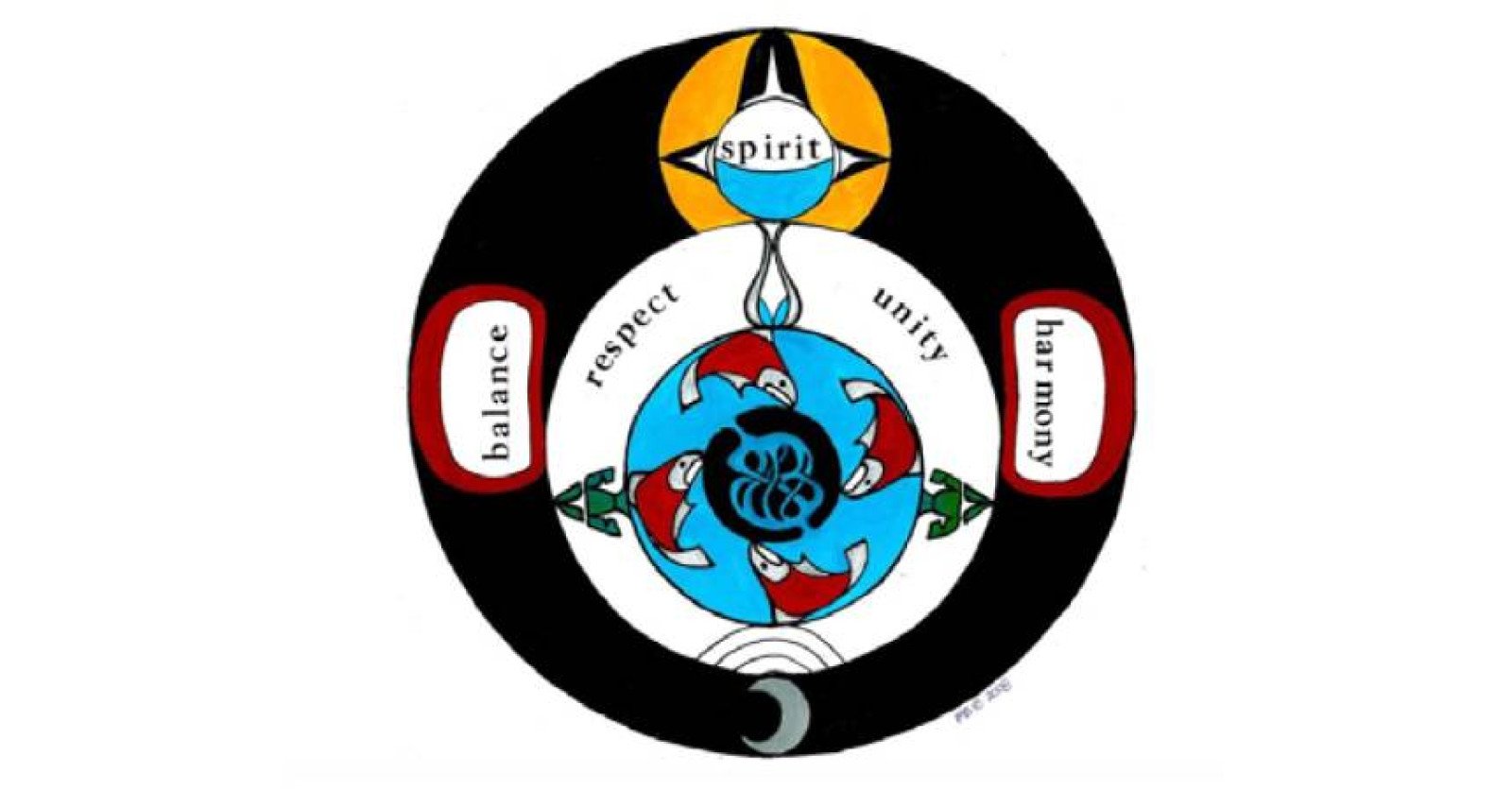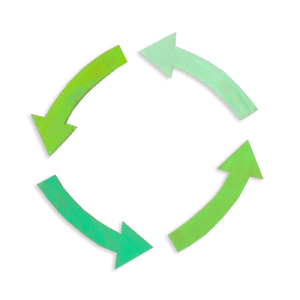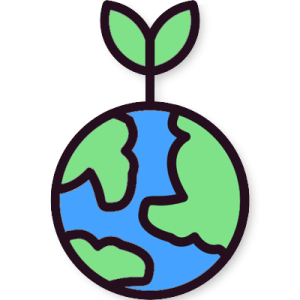Understanding the hydrologic cycle
What powerful ideas can we learn from different views of the water cycle?

Overview
In this activity, students identify powerful ideas from Indigenous Peoples and western science representations of the water cycle to learn how they might better care for water.
Instructions
What you'll need
- "The hydrologic cycle" handout, one per group
- "Blue ecology hydrologic cycle" handout, one per group
- "Analyzing similarities and differences" worksheet, one per student
- Invite your students to make a decision: How similar are western science and Indigenous Peoples’ views of the hydrologic cycle? Very similar? Somewhat similar? Not at all similar? Encourage your students to share their decisions and thinking with the class.
- Organize your students into small groups (2-4 students) and provide each group with a copy of the "The hydrologic cycle" and the "Blue ecology hydrologic cycle" handouts. Ask groups to carefully examine the images and identify any similarities and differences. Invite groups to share their observations, reminding your students that each cycle is unique and valuable and it is important that they be compared in respectful ways.
- Quickly review key aspects of the hydrologic cycle:
- It is a western science-based understanding of the continuous movement of water as it changes states on, above, and below the surface of the Earth.
- Exchanges of energy help move water from one water reservoir to another, such as from rivers to oceans, or from oceans to the atmosphere—sometimes through a change in state.
- Provide each student with a copy of the "Analyzing similarities and differences" worksheet. Ask your students to work on their own to note the two most important similarities and differences between the two cycles. Encourage students to share their thinking with their group.
- Encourage students to revisit their decisions from the beginning of this activity: How similar are western science and Indigenous Peoples’ views of the hydrologic cycle? Very similar? Somewhat similar? Not at all similar? If their thinking has changed, invite students to explain what changed their thinking. If their thinking has stayed the same, ask them to share what confirmed their initial decision.
- Conclude the activity by explaining the concept of “two-eyed seeing,” the idea that we can use the best ideas from different views to make a new way of seeing. Ask students to decide what powerful ideas might be learned from both views of the hydrologic cycle about how we might better care for water.
Modify or extend this activity
Extension
- Invite your students to create rework the western science representation of the water cycle using the most important ideas from the Blue Ecology hydrologic cycle.
Curriculum Fit
Earth Science 11
Big idea
- The transfer of energy through the atmosphere creates weather and this transfer is affected by climate change.
Content
- The hydrologic cycle
- Weather as the interaction of water, air, and energy transfer
- First Peoples knowledge of climate change and interconnectedness as related to environmental systems
Curricular competencies
Questioning and predicting
- Demonstrate a sustained intellectual curiosity about a scientific topic or problem of personal, local, or global interest
Processing and analyzing data and information
- Apply First Peoples perspectives and knowledge, other ways of knowing, and local knowledge as sources of information
Evaluating
- Demonstrate an awareness of assumptions, question information given, and identify bias in their own work and in primary and secondary sources
- Consider social, ethical and environmental implications of the finding from their own and others’ investigations
Applying and innovating
- Contribute to care for self, others, community, and world through individual or collaborative approaches
Communicating
- Communicate scientific ideas and information, and perhaps a suggested course of action, for a specific purpose and audience, constructing evidence-based arguments and using appropriate scientific language, conventions, and representations
- Express and reflect on a variety of experiences, perspectives, and worldviews through place
Environmental Science 11
Big idea
- Changing ecosystems are maintained by natural processes.
- Human practices affect the sustainability of ecosystems.
Content
- Matter cycles through and between living systems
- First Peoples knowledge and other traditional ecological knowledge in sustaining biodiversity
- Human actions and their impact on ecosystem integrity
Curricular competencies
Questioning and predicting
- Demonstrate a sustained intellectual curiosity about a scientific topic or problem of personal, local, or global interest
Processing and analyzing data and information
- Apply First Peoples perspectives and knowledge, other ways of knowing, and local knowledge as sources of information
Evaluating
- Demonstrate an awareness of assumptions, question information given, and identify bias in their own work and in primary and secondary sources
- Consider social, ethical and environmental implications of the finding from their own and others’ investigations
Applying and innovating
- Contribute to care for self, others, community, and world through individual or collaborative approaches
Communicating
- Communicate scientific ideas and information, and perhaps a suggested course of action, for a specific purpose and audience, constructing evidence-based arguments and using appropriate scientific language, conventions, and representations
- Express and reflect on a variety of experiences, perspectives, and worldviews through place
Assessments
Throughout the activity, assess your students’ abilities to:
- Respectfully and thoughtfully contribute to group discussions.
- Make effective and accurate observations.
- Provide thoughtful reflections that build on observations and raise important or interesting topics.
- Identify significant similarities and differences and offer plausible reasoning supported with evidence.
Teaching Notes
- This activity requires knowledge of the different components of the water cycle. Check out the U.S. Geological Survey website for a labelled diagram and to help build your knowledge of the different components of the water cycle.
- This activity requires a basic understanding of how climate change affects the water cycle. If you need help with this, check out this website from the University Corporation for Atmospheric Research for more information.
- Check out Michael Blackstock’s “Water: A First Nations’ spiritual and ecological perspective” and “Blue ecology and climate change” if you want to learn more about Blue Ecology and First Nation’s perspectives on water.
- More information about the concept of two-eyed seeing can be found at:
How this activity was developed
These materials were created with guidance from Indigenous educators, subject matter experts and thought leaders to help draw upon important teachings, learnings, and Indigenous perspectives.
For centuries, the traditional western view of water has often been focused on its value as a resource. Indigenous people have a unique relationship with the waters of British Columbia. Since time immemorial, water has played a sacred role and is seen as a living entity. How water is used must be carefully considered with a view towards not just the immediate need and impact, but the needs and perspectives of generations to follow.
We are dedicated to deep listening and respectfully highlighting Indigenous ways of knowing in the materials we provide B.C. educators. If you have any feedback for us on these activities, or suggestions for others, please email schools@bchydro.com. We would love to hear from you.
About the artist
The design of the worksheets in this activity was a collaborative effort with Indigenous artist Kelli Clifton. Kelli Clifton was born and raised in Prince Rupert, British Columbia and is Gitga’at from the community of Hartley Bay. Clifton is interested in using her artwork as a form of storytelling—especially in relation to her Ts’msyen language (Sm’algyax), her coastal upbringing and her experiences as an Indigenous woman. Clifton currently lives in her home community where she continues to practice her art and teaches Sm’algyax at a local high school. Learn more about Clifton's art on her Facebook page.
BC Hydro’s commitment to reconciliation
BC Hydro exists to serve British Columbians by providing clean, reliable and affordable electricity. We recognize that maintaining and developing the system has impacts on the lives and interests of Indigenous People. To support our move towards true and lasting reconciliation, BC Hydro will acknowledge past wrongs, listen to Indigenous perspectives and seek shared understanding with First Nations communities and governments.
Learn more about our Statement of Indigenous Principles.








